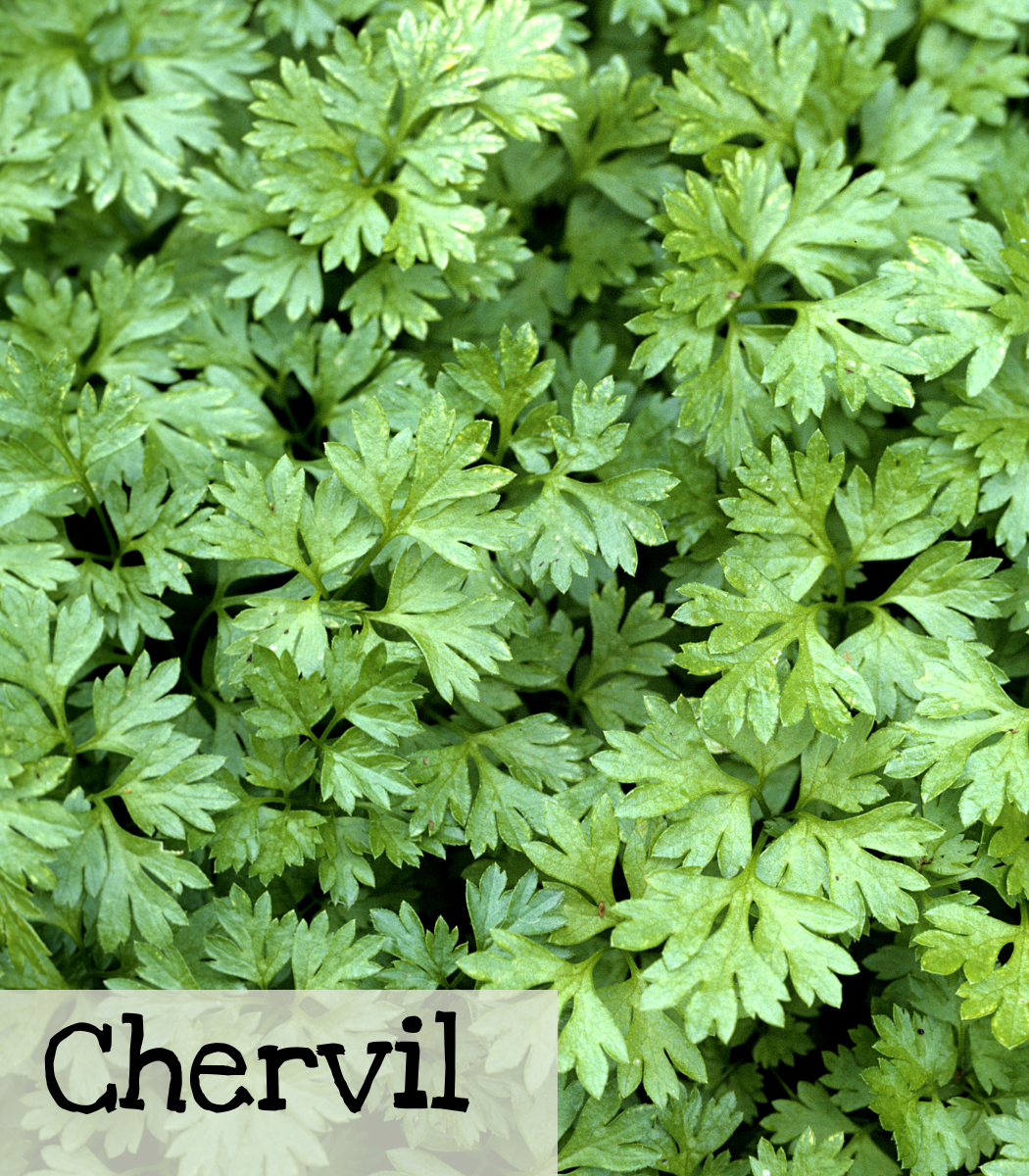
Chervil
A member of the parsley family, chervil is also called French parsley or garden chervil.
|
N/A |
|
Anthriscus cerefolium |
|
Easy |
|
Intermediate to Difficult |
|
1-4 years if properly stored |
|
Annual |
|
7-14 days |
|
None |
|
Surface Sow |
|
Yes |
|
20-24” high x 10-12” spread |
|
Seeds need light to germinate Part shade |
|
60 days |
|
March |
|
Yes |

Growing Tips


When to Start
Spring: Direct sow 2-3 weeks before your last average frost date. (Late March to Early April for Jefferson, GA)
How to Grow
As chervil develops a tap root and dislikes having its roots disturbed, it is best to direct sow. You might be able to get away with starting indoors if you use either bio-degradable pots or sow it in the pot it’s going to live in and place under grow lights. Either way, you will need to harden off before transplanting or moving the pot to its permanent location.
Chervil germinates best with the soil temps are 50-65 F. Direct sow 2-3 weeks before your last average frost date, but after the danger of moderate to severe freezes has passed.
Surface sow the seeds as they need light to germinate. Gently press the seeds into the soil. You can lightly cover them with fine soil, then water them in. Germinate can be slow usually taking between 7-14 days, but it can take 3 weeks.
Frost-free areas can be sown from fall to early spring. Thin chervil to 10 inches apart.
Care
Chervil likes part shade, which is 4-6 hours of direct sunlight. The soil should be well-draining. Keep the soil moist but not soggy. Over-watering is a danger as this will encourage diseases.
For disease prevention, it is best to water at the base using soaker hoses where possible and maintain proper spacing for good air circulation. Both will contribute greatly to the health of the plant.
Chervil grows best in cooler weather. It will slow down with higher temperatures and probably bolt. Once it bolts, like its relative parsley, chervil leaves will become bitter.
For more bushy growth, pinch back leaves and cut the flower stem. For a longer harvest try succession sowing by sowing every 2 weeks.
Pest Management
Chervil isn’t often bothered by pests. Young plants can be attached by slugs. Use crushed eggshells around the base, making sure there are no gaps. The slugs will cut themselves when crossing the shells and will dry out and die. Hand-picking may also be necessary.
Chervil does struggle at times with dampening off and both powdery and downing mildew. Not over-watering, watering at the base, and good air circulation will help prevent these issues.
How to use
Traditionally used in French cuisine, the anise-flavored leaves are often added to egg, vegetable, and fish dishes. Chervil tastes best when harvested young. Cut leaves at the base.
It can also used to make herb butter. Finely chop and mix into softened butter. Then roll the butter mixture into a log using plastic wrap and place the wrapped log in the freezer. When you are ready to use it, remove it from the freezer and slice the herb butter into thin patties.
To dry for later use, harvest in the morning for peak flavor. Wash and then pat dry or lay on paper towels so that they aren’t soppy wet. Then bunch the leaves and tie them together. Hang them upside down to dry in a cool place out of direct sunlight. Once fully dry, store in an air-tight jar.
Seed Saving


Isolation Distance
Chervil will cross with other members of the umbelliferae family. (Queen Ann’s Lace, fennel, dill, and carrots are a few.) It is insect-dependent for pollination. Separate by 1/2 mile.
Instructions
To prevent cross-pollination, cage plants or bag blooms before the flowers open. Then hand-pollinate the umbels when they open every day for 2-4 weeks.
Once the seeds form and are dry remove the umbels. Separate the seeds and let them dry further out of direct sunlight. Then store the dried seeds in paper bags to preserve viability.
Features
- An aromatic herb used in various dishes
- Can be used as microgreens

Chervil does struggle at times with dampening off and both powdery and downing mildew. Not over-watering, watering at the base, and good air circulation will help prevent these issues.
Sources:
Edenbrothers.com
Burpee.com
Rareseeds.com
